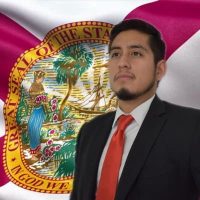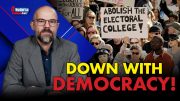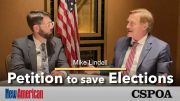The U.S. Supreme Court on Wednesday night put a stop to New York Governor Andrew Cuomo’s attempt to reimpose strict limits on attendance at worship services in areas that have seen higher numbers of coronavirus infections.
The 5-4 ruling saw Justice Amy Coney Barrett, the recent Trump appointee, making the decisive vote, as Chief Justice John Roberts voted with the court’s liberal members in the minority vote to uphold Cuomo’s church attendance caps.
The case centered on Cuomo’s October 6 “Cluster Initiative” against houses of worship that prompted churches to sue the state.
The governor’s system had instituted color-coded limits on mass gatherings and business operations to fight back the surge in cases. It was primarily aimed at some synagogues and Roman Catholic churches in parts of Brooklyn and Queens, Bloomberg reported.
In the hardest-hit areas (designated red zones), the state restricted attendance in houses of worship to 25 percent of their capacity or 10 people, whichever was fewer. The court majority said his limits violated the First Amendment’s protection of the free exercise of religion.
In his concurring opinion, Justice Neil Gorsuch argued that Cuomo had treated religious activities less favorably than nonreligious ones.
“It is time — past time — to make plain that, while the pandemic poses many grave challenges, there is no world in which the Constitution tolerates color-coded executive edicts that reopen liquor stores and bike shops but shutter churches, synagogues, and mosques,” wrote Gorsuch, who was also named to the court by President Trump.
In another section of the ruling, Gorsuch wrote:
At the same time, the Governor has chosen to impose no capacity restrictions on certain businesses he considers “essential.” And it turns out the businesses the Governor considers essential include hardware stores, acupuncturists, and liquor stores. Bicycle repair shops, certain signage companies, accountants, lawyers, and insurance agents are all essential too. So, at least according to the Governor, it may be unsafe to go to church, but it is always fine to pick up another bottle of wine, shop for a new bike, or spend the afternoon exploring your distal points and meridians. Who knew public health would so perfectly align with secular convenience?
Gorsuch also highlighted the importance of ruling on this issue despite the fact that the houses of worship involved are no longer under red zones. For the justice, the question must be decided and religious freedom upheld even if it will not make a tangible difference today — because it might tomorrow.
Now those regions are “yellow zones” and the challenged restrictions on worship associated with “orange” and “red zones” do not apply. So, the reasoning goes, we should send the plaintiffs home with an invitation to return later if need be.
To my mind, this reply only advances the case for intervention. It has taken weeks for the plaintiffs to work their way through the judicial system and bring their case to us. During all this time, they were subject to unconstitutional restrictions. Now, just as this Court was preparing to act on their applications, the Governor loosened his restrictions, all while continuing to assert the power to tighten them again anytime as conditions warrant. So if we dismissed this case, nothing would prevent the Governor from reinstating the challenged restrictions tomorrow. And by the time a new challenge might work its way to us, he could just change them again. The Governor has fought this case at every step of the way. To turn away religious leaders bringing meritorious claims just because the Governor decided to hit the “off ” switch in the shadow of our review would be, in my view, just another sacrifice of fundamental rights in the name of judicial modesty.
The latest ruling was seen as a reversal from earlier actions taken by the high court amid the COVID-19 outbreak. The justices had previously declined to lift restrictions on churches in California and Nevada.
Chief Justice Roberts, who was appointed by Republican President George W. Bush but has built a reputation of regularly siding with the liberal justices on major cases, authored the dissenting opinion supporting Cuomo’s order.
“Numerical capacity limits of 10 and 25 people, depending on the applicable zone, do seem unduly restrictive,” Roberts wrote. “It is not necessary, however, for us to rule on that serious and difficult question at this time.”
“The governor might reinstate the restrictions,” he continued. “But he also might not. And it is a significant matter to override determinations made by public health officials concerning what is necessary for public safety in the midst of a deadly pandemic. If the governor does reinstate the numerical restrictions the applicants can return to this court, and we could act quickly on their renewed applications.”
Thanks to four years of President Trump and his ability to secure three Supreme Court picks, religious freedom has scored a major and well-deserved win.




